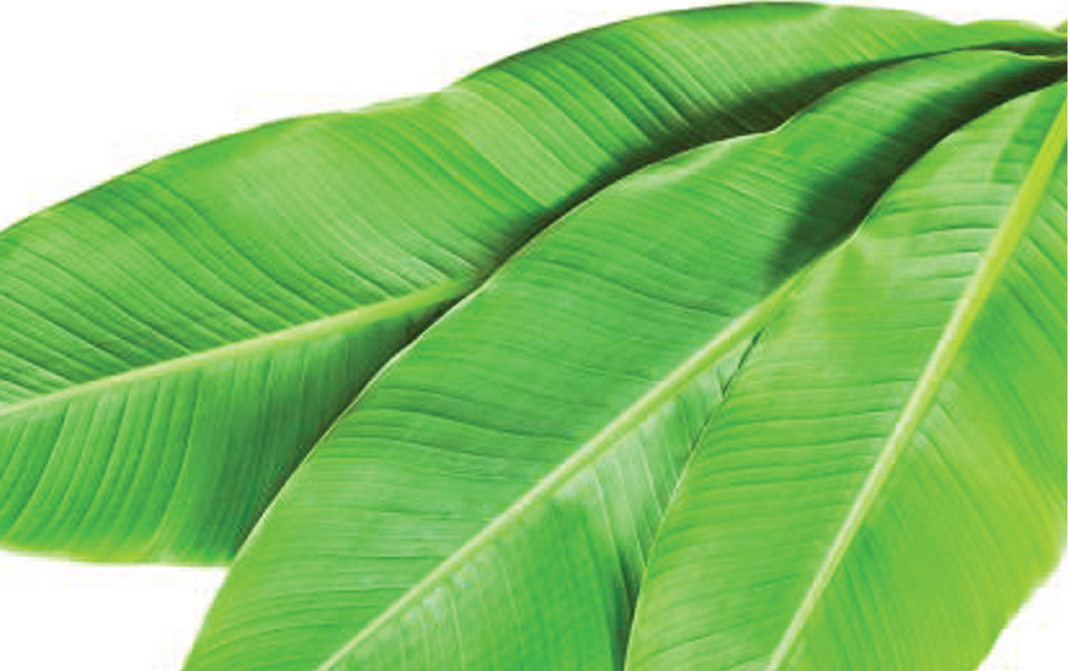


Avoid the ones that have brown spots. Choose the fresh looking leaves.
(1) https://drhealthbenefits.com/herbal/leaves/health-benefits-of-banana-leaves
- Disclaimer
"Information here is provided for discussion and educational purposes only. It is not intended as medical advice or product or ingredient review/rating. The information may not apply to you and before you use or take any action, you should contact the manufacturer, seller, medical, dietary, fitness or other professional. If you utilize any information provided here, you do so at your own risk and you waive any right against Culinary Communications Private Limited, its affiliates, officers, directors, employees or representatives.”
Description
Banana leaves are large, wide, elongated, and little bit rounded. The surface of the Banana leaves are waxy, flexible, and glossy, and range in color from lime, olive green, to dark green. There is a central midrib that runs the length of the banana leaf and two laminas, or leaf halves are found on either side of the midrib. The banana leaves do not have branching veins, and this makes them vulnerable to tearing easily. The banana plant also has a pseudostem, which is a false stem that looks like a trunk but has multiple fleshy leaf sheaths that are tightly overlapped. They are not typically consumed but are used as a waterproof wrapper to cook food and add flavor. They are native to Southeast Asia. Today they are found across the world including Asia, Southeast Asia, Central Africa, Latin America, Europe, Australia, the United States, and the Caribbean. They are available throughout the year. South Indian cuisine and Philippine cuisine is traditionally served on a banana leaf.